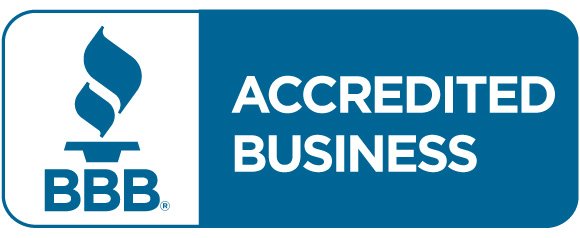This report examines the key developments shaping the real estate industry during the first week of August 2025, covering market conditions, technological innovations, regulatory changes, and economic factors influencing buyer and seller decisions.
Market Conditions and Pricing Trends
Current Market Dynamics
- Mortgage rates remain elevated at 6.78% (early July), with expectations that rates will stay between 6–7% through the rest of 2025.
- Median existing home price hit $422,800 in May 2025, the highest on record for that month.
- National home price appreciation slowed to just 1.0% YoY.
- Housing inventory rose to 4.6 months of supply in May, up from 3.8 months a year earlier—closer to balance but still below the 5–6 month benchmark.
- Time on market increased to 40 days.
- Existing home sales rose slightly (+0.8% in May), while new home sales surged 10.6% in July, buoyed by builder incentives.
- 22 of the 50 largest metros saw YoY price declines, including Tampa (–5.4%) and Austin (–5.2%), while Northeast and Midwest metros maintained modest growth.
- About 25% of listings had price cuts in June 2025—the highest June level since 2018.
Sources:
New Real Estate Technology Launches
Artificial Intelligence Integration
- The AI in real estate market is projected to hit $1.8T by 2030 (35% CAGR).
- AI property valuations now reach 90% accuracy, surpassing traditional appraisal methods.
- Keller Williams’ KWIQ AI assistant supports agents with content creation, client communications, and market analysis (source).
Virtual and Augmented Reality Advancements
- Homes with 3D tours get 87% more views and sell 31% faster.
- Digital twin technology allows for detailed property replicas.
- Augmented reality tools let buyers preview renovations and furniture placement during virtual tours.
Blockchain and Digital Transactions
- Platforms like RealT, Propy, SolidBlock enable tokenized global property trading.
- Smart contracts now automate title transfers, escrow, and payments—cutting closing times from weeks to hours.
- Fractional investment via tokenization makes real estate accessible to smaller investors.
Smart Home and IoT Integration
- Consumer spending on smart home devices projected at $170B in 2025.
- IoT systems now control HVAC, lighting, and security, becoming standard features for Millennial and Gen Z buyers.
PropTech Platform Evolution
- Digital transaction management (DTM) is now industry standard (e.g., DocuSign).
- AI-enhanced CRM platforms automate lead scoring, follow-ups, and marketing campaigns, integrated with MLS and transaction systems.
Sources:
Regulatory Changes Affecting Agents and Transactions
NAR Settlement Implementation Impact
- One year after the NAR settlement (Aug 2024), commission rates rose slightly from 5.32% (2024) to 5.44% (2025).
- For a median-priced home of $367,711, total fees are $20,003 (Seller’s agent: 2.77%, Buyer’s agent: 2.67%).
- Mandatory buyer representation agreements are now required before showings.
MLS Commission Disclosure Changes
- MLS platforms can no longer show buyer-agent compensation offers, though sellers may still negotiate concessions outside MLS.
State-Level Updates
- Missouri now requires written agency agreements before any brokerage services (July 2025).
Federal Real Estate Policy Changes
- The Utilizing Space Efficiently and Improving Technologies Act (2025) mandates utilization reporting for federal leases, impacting CRE.
- NAR introduced Office Exclusive Exempt Listings and Delayed Marketing Exempt Listings in March 2025, giving sellers more marketing flexibility but sparking debate over transparency.
Sources:
Economic Factors Driving Buyer/Seller Decisions
Federal Reserve Policy and Interest Rates
- Fed funds rate steady at 4.25–4.50%. Analysts expect at most 1–2 modest cuts in 2025.
- Mortgage rates expected to remain in the 6–7% range.
- Inflation at 2.4% (May 2025) remains above the Fed’s target.
Economic Growth Concerns
- 37% of Americans believe the country is already in a recession. Nearly half are postponing major purchases like homes.
- Economist Mark Zandi warns housing could become a “headwind to economic growth.”
Consumer Confidence and Buyer Behavior
- Buyers are cautious; 75% of agents report clients pausing searches.
- Purchases driven by necessity (family, jobs) rather than lifestyle upgrades.
Employment Market Dynamics
- U.S. added 7M jobs in 3 years, but home sales remain at 75% of pre-pandemic norms.
- Wage growth (3.8%) > CPI (2.3%), but offset by higher housing costs.
Demographic and Generational Factors
- Millennials and Gen Z buyers prefer tech-enabled, sustainable homes and are relocating to more affordable markets.
Policy Uncertainty
- Tariffs and trade uncertainty raise construction costs, lowering builder confidence.
- 38% of builders cut prices in July, up from 29% in April.
Market Outlook and Implications
The real estate industry in August 2025 is in cautious transition:
- Technology adoption (AI, VR, blockchain) is accelerating, becoming standard.
- Affordability challenges persist with high prices and borrowing costs.
- Regional variations are widening—supply-limited metros remain stable, oversupplied markets decline.
- Economic uncertainty continues to shape buyer and seller behavior.


